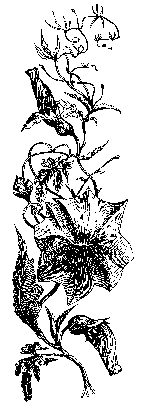


Native to the Mediterranean and eastward to India, fennel is a fragrant, warm, sweet aromatic herb that lends its distinctive flavor to many meals. Its mild remedial action is soothing and welcome.
As an herbal home remedy, fennel is most often used for indigestion and taken as a tea of the seed; the leafy herb is sometimes used too (see “S is for Spice Rack Remedies,” page 255). Fennel is a carminative, which means it helps relieve gas, and it is especially good for baby’s colic. Said to increase breast milk, a nursing mother can drink fennel seed tea and impart its soothing qualities to her baby in that way. Some people take crushed fennel seed warmed with milk and honey as a sleepytime toddy. The tea can also be used as a gargle for a sore throat. To make fennel tea, simmer 1 tablespoon whole, dried seed with 1 pint water for 5 minutes; cover and remove from heat, then steep for another 15 minutes. Strain and serve sweetened with a bit of honey (except if you’re giving to baby—no honey to babies under one year old).
The use of fennel as a culinary companion is usually associated with steamed fish or Italian and East Indian cooking. There are two types of fennel: Foeniculum vulgare, known as seed fennel, and F. dulce, known as sweet fennel or by the Italian name finoccio. The delicate leaf of sweet fennel is often used to wrap or stuff whole fish destined for the grill or steamer; this method actually aids in the digestion of oily fish such as salmon. Its bulbous stalk, looking not unlike a bunch of celery, can be eaten raw, steamed, roasted, grilled, and certainly sautéed. Truth be told, it took me years to finally break down and try fresh fennel, and now I love it. Fennel seed is a complementary seasoning to lamb or pork and is an essential ingredient in sweet Italian sausage. Lentils and other beans also welcome a touch of fennel seed.
The recipe that follows is a good example of how the common potato can be transformed by the sweet, aromatic flavor of fennel seed. The venerable Idaho potato is grown extensively in the southern part of the state as well as neighboring Washington, but this dish can be enjoyed no matter where you live. I sometimes use Yukon Gold potatoes. Do not use red mashing potatoes, they fry up sticky. You will have to use your own judgment and experience on the heat level and amount of oil; I will give approximate amounts. I highly recommend using cast-iron skillets. The amount of herbs specified is light-handed; I usually use more.

Famous Potatoes with Cheddar and Two Seeds
4 medium baking potatoes, peeled and cubed ½-inch
1 medium onion, peeled and coarsely chopped
1 teaspoon whole fennel seed
¼ teaspoon whole anise seed
¼ teaspoon dried oregano or tarragon (or both)
Salt and pepper
½ –1 cup grated Cheddar cheese (mozzarella is good too)
Approximately 1 teaspoon plus 2 teaspoons cooking oil
¼ cup sunflower seeds, optional
In a large skillet or other heavy frying pan, over medium heat, sauté onion in about 1 teaspoon oil. After they soften, about 7 minutes or so, remove from skillet and set aside; wipe out the skillet, then add about 2 teaspoons oil. Return to medium-high heat—the oil should begin to “smile” in the skillet—then add the potatoes, turning to coat in the oil. Fry them up a few minutes to start crisping, then cover and turn heat to medium-low and cook for about 15 minutes. (It’s important not to use too much oil, but to use enough; I wish I could give you an exact amount, but this is something you’ll have to experience.)
In the meantime, take the fennel and anise seeds and crush them with a mortar and pestle. (You say you don’t have one? Try a flat rock base with a round rock crusher. Or put the seeds in a plastic bag and crush them with a hammer on the cutting board. Or leave the seeds whole—don’t get too worked up over it.) Gently crush the oregano and sprinkle the seasonings, including the seeds, salt, and pepper, over the potatoes. Cover again and cook until the potatoes are done, about 15 minutes (test a piece). Remove lid, turn up the heat a little, return the onions to the skillet, combine, and let the potatoes brown to your liking, turning once. When nice and crisp, sprinkle with the grated cheese, cover, and turn off the heat. When cheese is melted, about 5 minutes, serve to those whose appetites were stimulated by the fantastic aroma. If you toss in sunflower seeds, the recipe will be more protein-correct and suitable to serve as a meatless main dish. In any case, there will probably be no leftovers. Serves 6 as a side dish or 4 as a meal.
A nice variation that adds a tasty bit of color to this dish is to include a healthy portion of minced fresh chives or parsley or both. Chervil has an anise flavor that would also complement this dish. Add the fresh herbs at the end of the cooking time, tossing with the potatoes just before topping with cheese. Do not be tempted to purchase pre-ground fennel seed—it will be stale.